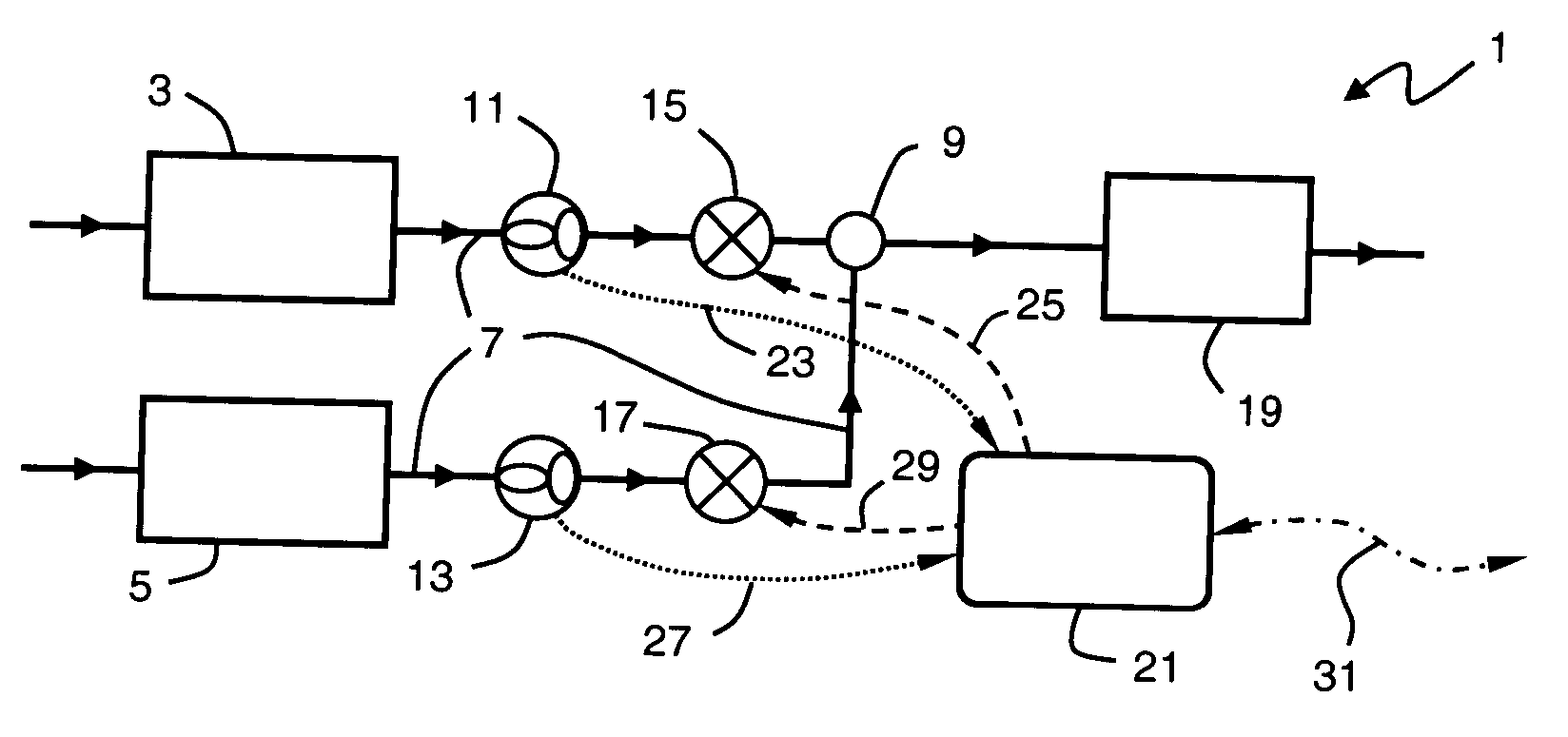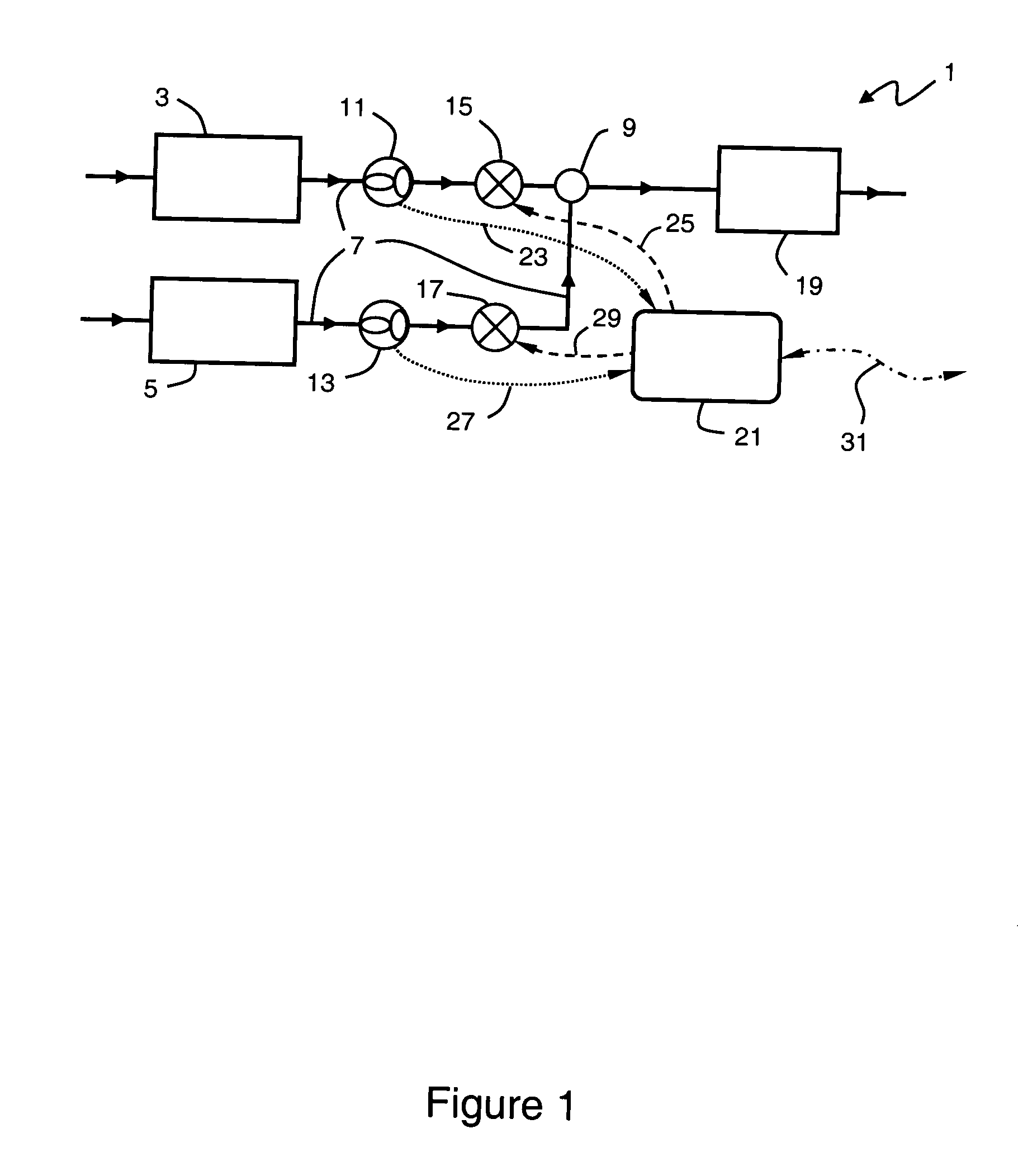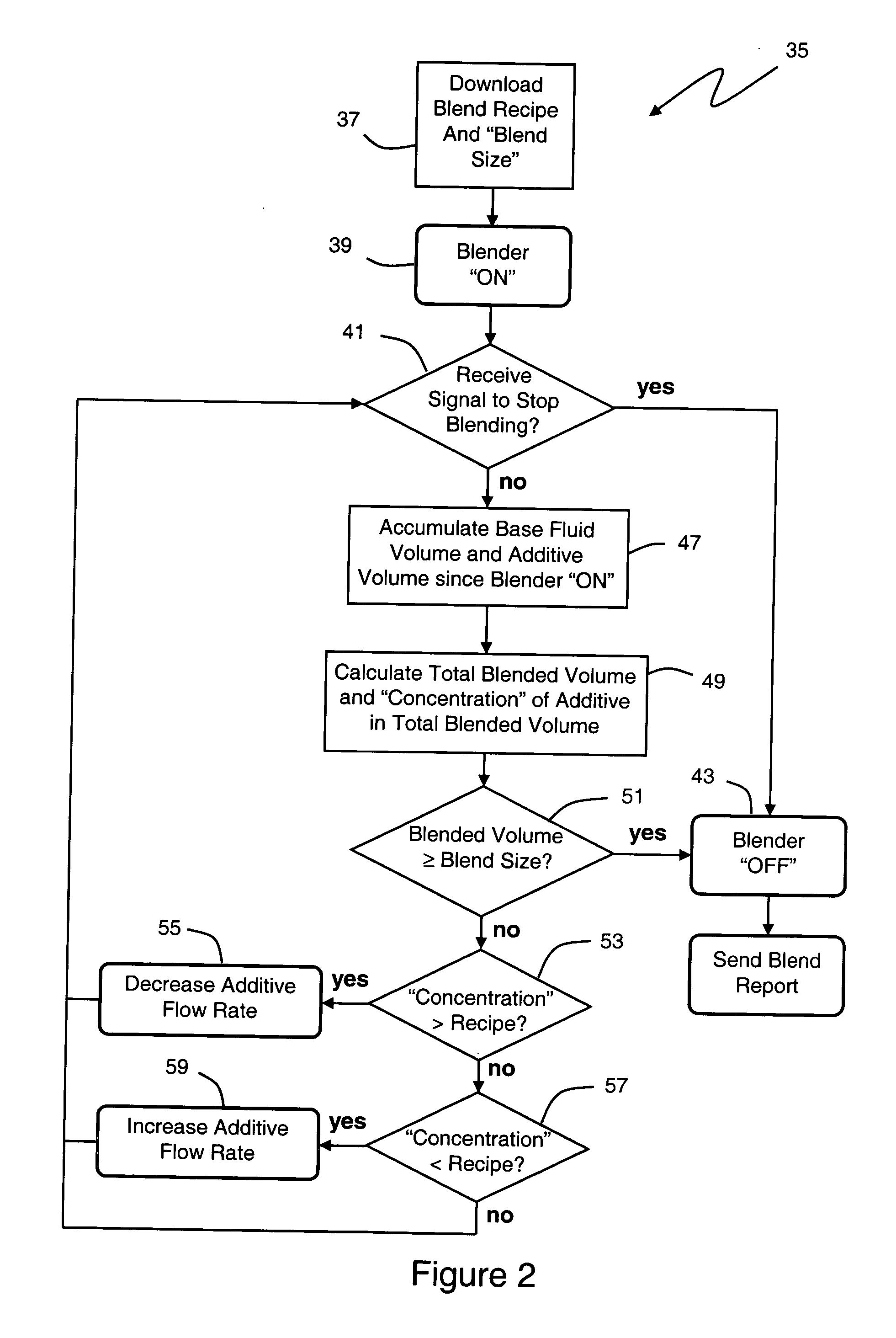Method to blend two or more fluids
- Summary
- Abstract
- Description
- Claims
- Application Information
AI Technical Summary
Benefits of technology
Problems solved by technology
Method used
Image
Examples
Embodiment Construction
With reference to FIG. 1, blending apparatus 1 is shown that includes two fluid component inlets 3, 5, piping 7, blending location 9, meters 11, 13 and valves 15, 17 in the piping, blender output 19 and blender controller 21. As used herein, a fluid component is any material or mixture of materials that can flow, and which flow can be measured by, either volume or mass, and further can be controlled. Fluid components include, but are not limited to liquids, gasses solid particulates and mixtures thereof, in particular chemicals, fuels, fluid, additives, lubricant oil and the like. Exemplary components include but are not limited to ethanol, methanol, methanol / butyl alcohol, multi-component alcohol, butane, ethyl-hexyl nitrate, gasoline, dimethyl ether heating oil, oxygenate blending, gasoline into alcohol (for denaturing), gasoline, diesel fuel, emulsified fuel and mixtures thereof. The blender inputs 3, 5 connect to storage tanks, pipe lines or other fluid providing means (not sho...
PUM
 Login to View More
Login to View More Abstract
Description
Claims
Application Information
 Login to View More
Login to View More - R&D
- Intellectual Property
- Life Sciences
- Materials
- Tech Scout
- Unparalleled Data Quality
- Higher Quality Content
- 60% Fewer Hallucinations
Browse by: Latest US Patents, China's latest patents, Technical Efficacy Thesaurus, Application Domain, Technology Topic, Popular Technical Reports.
© 2025 PatSnap. All rights reserved.Legal|Privacy policy|Modern Slavery Act Transparency Statement|Sitemap|About US| Contact US: help@patsnap.com



